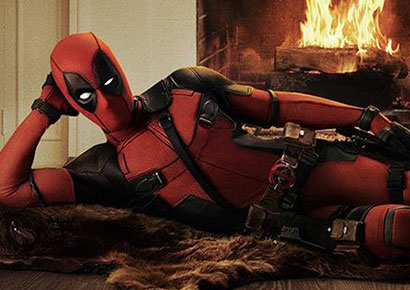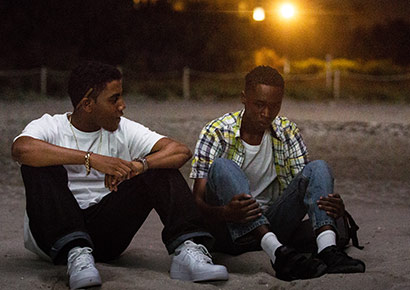LGBTQ people nearly invisible or punchlines in Hollywood movies

Deadpool
Despite the critical success of the Oscar-winning Moonlight, a new report has found that LGBTQ people have little screen-time or are the butt of jokes in big Hollywood films.
GLAAD, the LGBTQ media advocacy organisation, has released its fifth annual Studio Responsibility Index, which maps the quantity, quality, and diversity of LGBTQ people in films released by the seven largest Hollywood film studios and their subsidiaries in 2016.
It found that of the 125 releases from major studios, only 23 of them (18.4%) included characters identified as LGBTQ.
In addition, the overwhelming majority of LGBTQ characters in mainstream films are still minor, in both screen time and substance. Of the 23 mainstream films that GLAAD found to be LGBTQ-inclusive in 2016, 10 (43%) included less than one minute of screen time for their LGBTQ characters.
Notably, comedy films are the genre most likely to contain LGBTQ characters. Films like Dirty Grandpa and Central Intelligence included characters who were primarily used as the punchline in jokes based on outdated stereotypes for cheap laughs.
Gay men are still by far the most represented group within the LGBTQ community with 83% of inclusive films featuring gay male characters.
Lesbian portrayals rose from 23% in 2015 to 35% of inclusive films. Bisexual representation appeared in 13% of LGBTQ-inclusive films.
At the same time, said GLAAD, Harley Quinn’s bi identity, which is front and centre in the comic books that inspired the film, was completely erased in the Suicide Squad movie.
Several films also required the audience to have read press coverage or have outside knowledge, such as Deadpool, where the director confirmed the lead character to be pansexual but did not reveal this in the film.
Transgender representation remains abysmally low, said GLAAD, with only one transgender character counted, the same number as the 2015 report, “and once again the character was used a punchline in Zoolander 2”.
Hollywood needs to catch up to the advances seen on television
The organisation noted that while 2017 has seen highly buzzworthy LGBTQ moments in films like Beauty and the Beast and Power Rangers, the forecast for the summer blockbuster season is a continuation of LGBTQ invisibility.

Moonlight
“With many of the most popular TV shows proudly including LGBTQ characters and stories, the time has come for the film industry to step up and show the full diversity of the world that movie audiences are living in today instead and end the outdated humour seen in many films,” said GLAAD President and CEO Sarah Kate Ellis.
“Films like Moonlight prove there is a huge opportunity to not only tell LGBTQ stories worthy of Oscar gold, but to open the hearts and minds of audiences here and around the world in places where these stories can be a lifeline to the people who need it most.”
GLAAD also found that racial diversity among LGBTQ characters in film again dropped drastically year over year. In 2016, only 20% of LGBTQ characters were people of color, compared to 25.5% in 2015 and 32.1% in 2014.
Of the LGBTQ characters counted, 48 were White (69%), nine were Black/African American (13%), four were Asian/Pacific Islander (6%), and one was Latinx (1%). Eight characters (11%) were non-human.
Leave a Reply